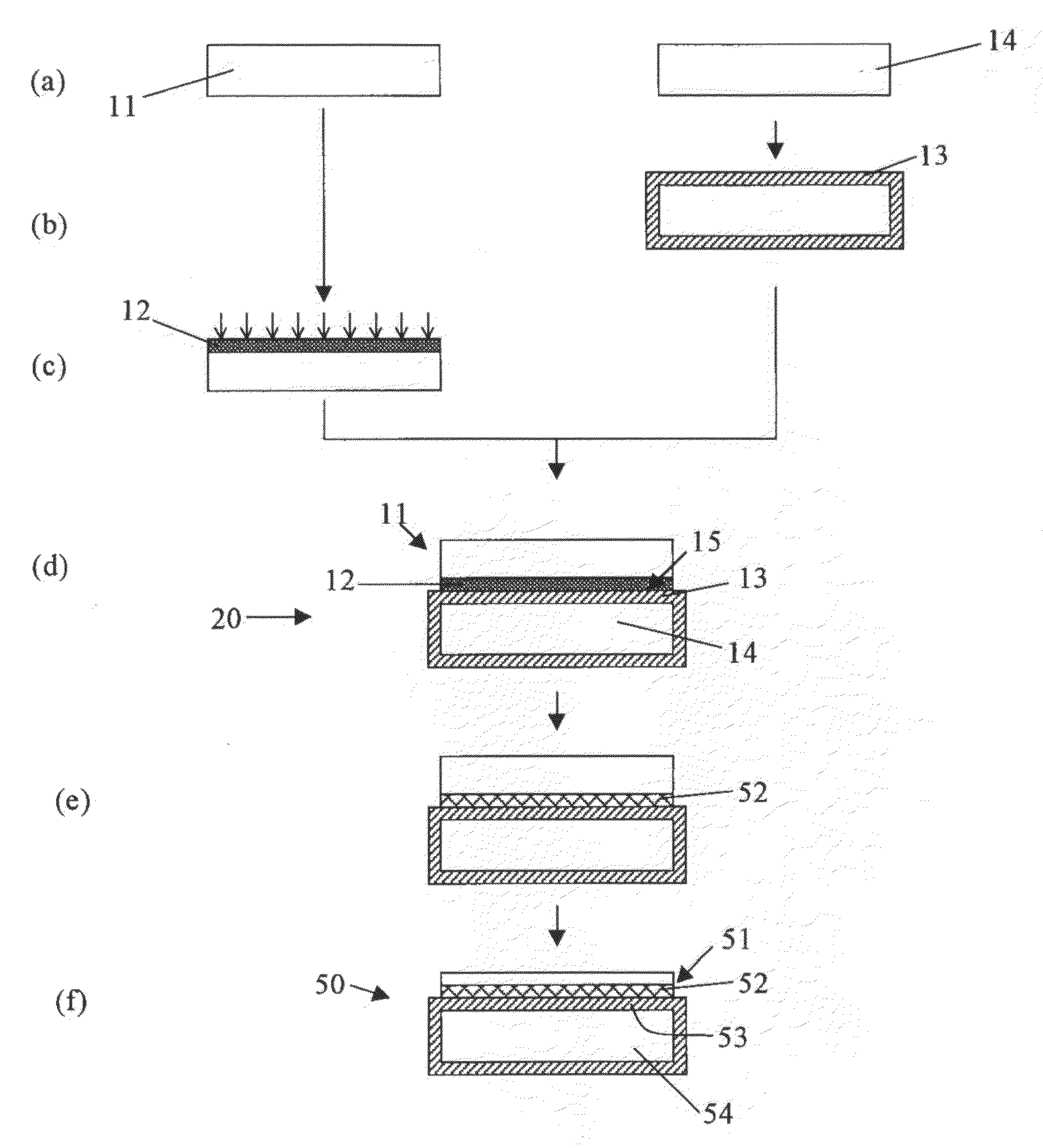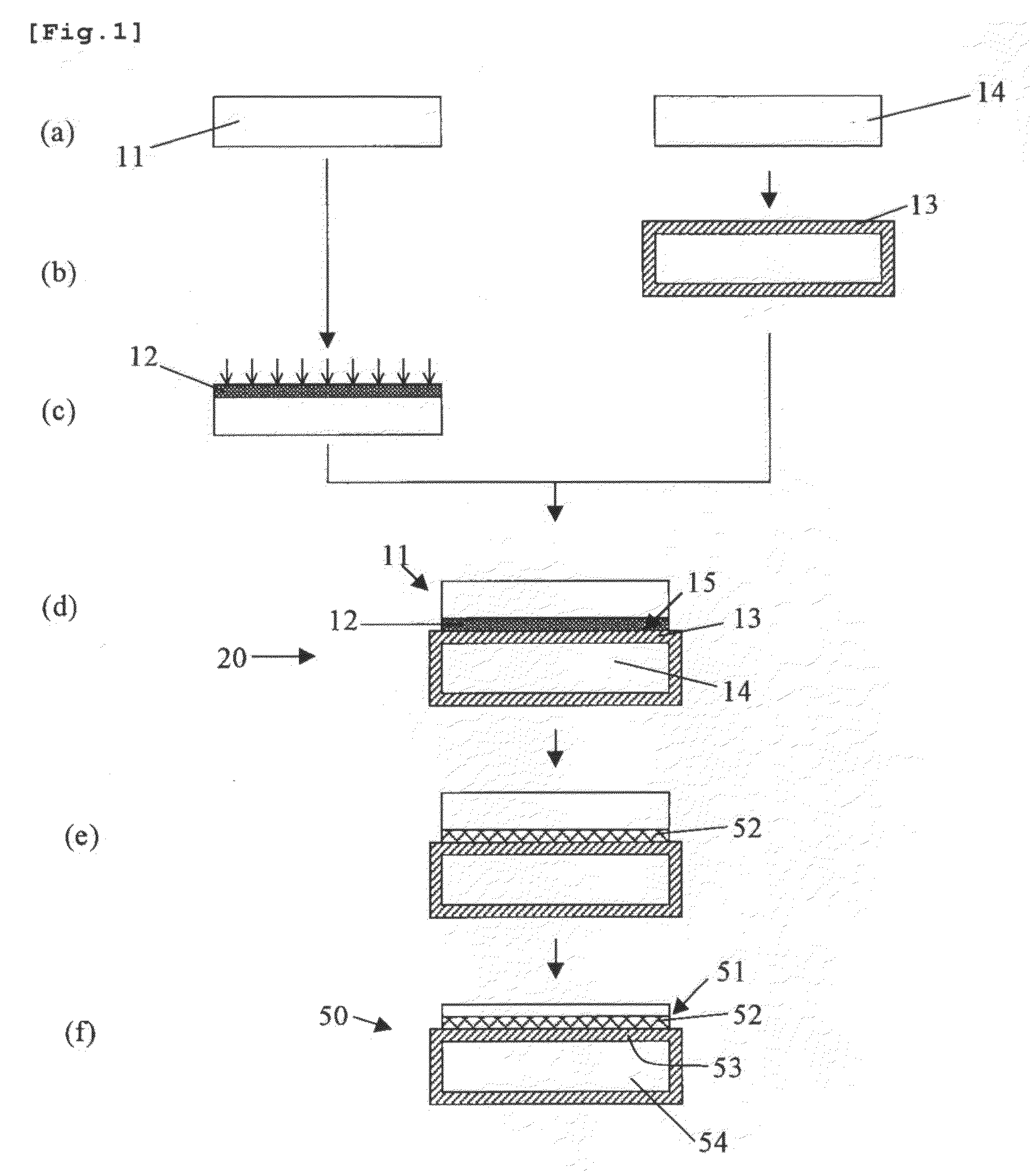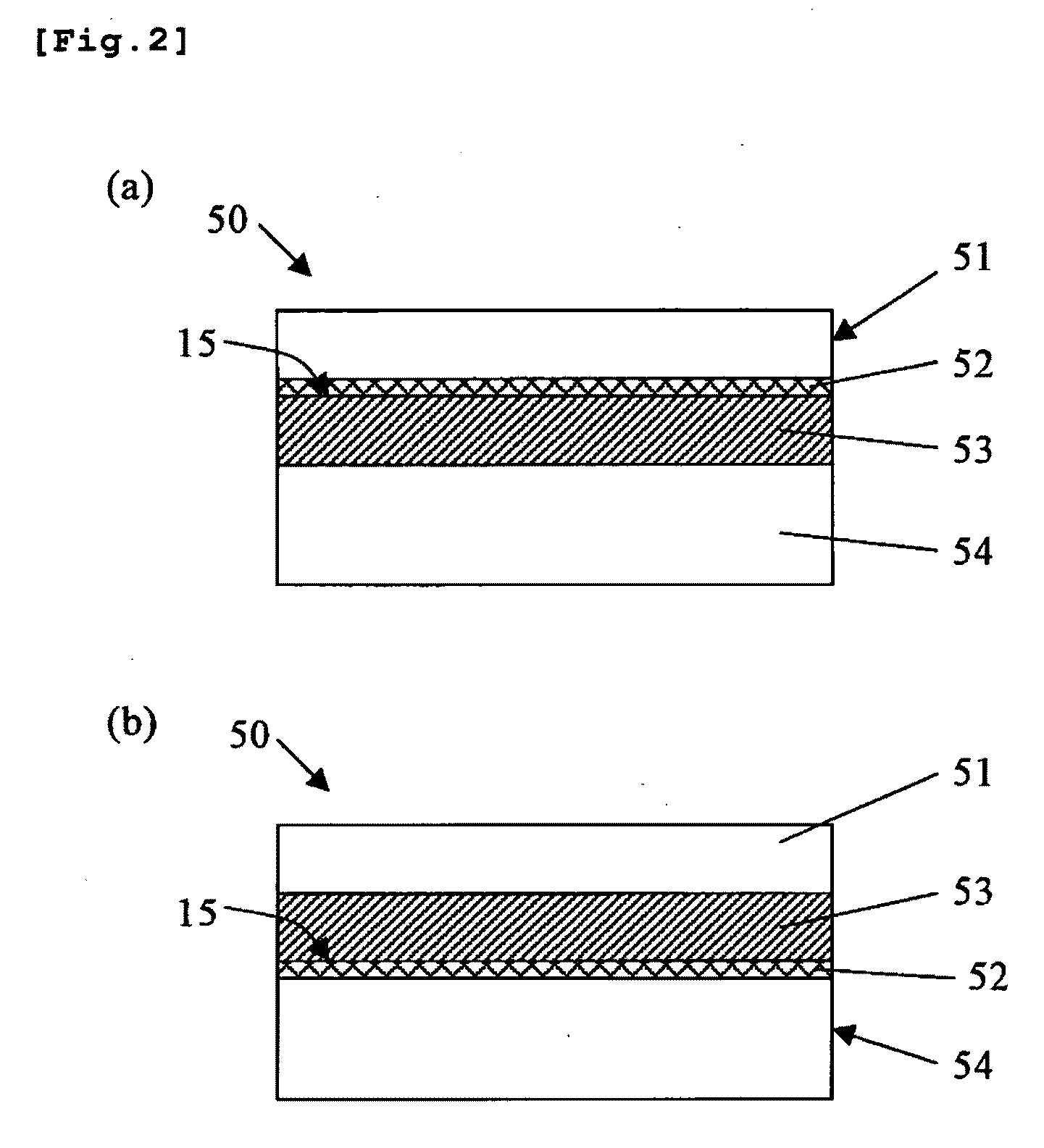Method for Producing Soi Wafer
a technology of silicon on insulator and soi, which is applied in the direction of semiconductor/solid-state device manufacturing, basic electric elements, electric apparatus, etc., can solve the problems of increased harmful effect of metal contamination, increased impurities, and disadvantages of soi wafer structure, and achieves high degree of uniformity in film thickness
- Summary
- Abstract
- Description
- Claims
- Application Information
AI Technical Summary
Benefits of technology
Problems solved by technology
Method used
Image
Examples
examples
[0072]Hereinafter, the present invention is described more specifically showing examples of the present invention, but these examples should by no means be construed as limiting the present invention.
examples 1 and 2
[0073]According to the steps as shown in FIG. 1, there were produced SOI wafers in which a polycrystalline silicon layer had been introduced as described in the following.
[0074]First there were prepared two mirror-polished N-type silicon single crystal wafers 725 μm in thickness, 200 mm in diameter, a plane orientation of {100} (a). On a surface of the base wafer 14, there was formed a silicon oxide film 13 approximately 1 μm in thickness to serve as a Box layer by thermal oxidation (b).
[0075]Then, onto the surface of the bond wafer 11, argon was ion-implanted at an acceleration voltage of keV and at a dosage of 1×1015 atoms / cm2 (Example 1) or 4×1016 atoms / cm2 (Example 2).
[0076]Next, the bond wafer 11 and the base wafer 14 were, with a surface of the bond wafer 11 ion-implanted with argon as a bonding surface, brought into contact and bonded together in such a way that a silicon oxide film 13 was put in between (d). Subsequently, a bonding heat treatment for increasing the bond stre...
example 3
[0084]An SOI wafer having a structure as shown in FIG. 2 (b) was produced in a method similar to the one used in Example 1 except that the base wafer 14 is ion-implanted with argon at a dosage of 4×1016 atoms / cm2 and that an oxide film approximately 50 nm in thickness was formed on the bond wafer 11. Then according to the technique similar to the one in Example 1, gettering ability was evaluated and the result is shown in FIG. 7.
[0085]As a result, it was found that Ni was trapped in the 2 μm-thick surface of the base wafer and that the SOI wafers of Example 3, with this surface as a gettering layer, had high gettering ability.
PUM
| Property | Measurement | Unit |
|---|---|---|
| temperature | aaaaa | aaaaa |
| thickness | aaaaa | aaaaa |
| thickness | aaaaa | aaaaa |
Abstract
Description
Claims
Application Information
 Login to View More
Login to View More - R&D
- Intellectual Property
- Life Sciences
- Materials
- Tech Scout
- Unparalleled Data Quality
- Higher Quality Content
- 60% Fewer Hallucinations
Browse by: Latest US Patents, China's latest patents, Technical Efficacy Thesaurus, Application Domain, Technology Topic, Popular Technical Reports.
© 2025 PatSnap. All rights reserved.Legal|Privacy policy|Modern Slavery Act Transparency Statement|Sitemap|About US| Contact US: help@patsnap.com



